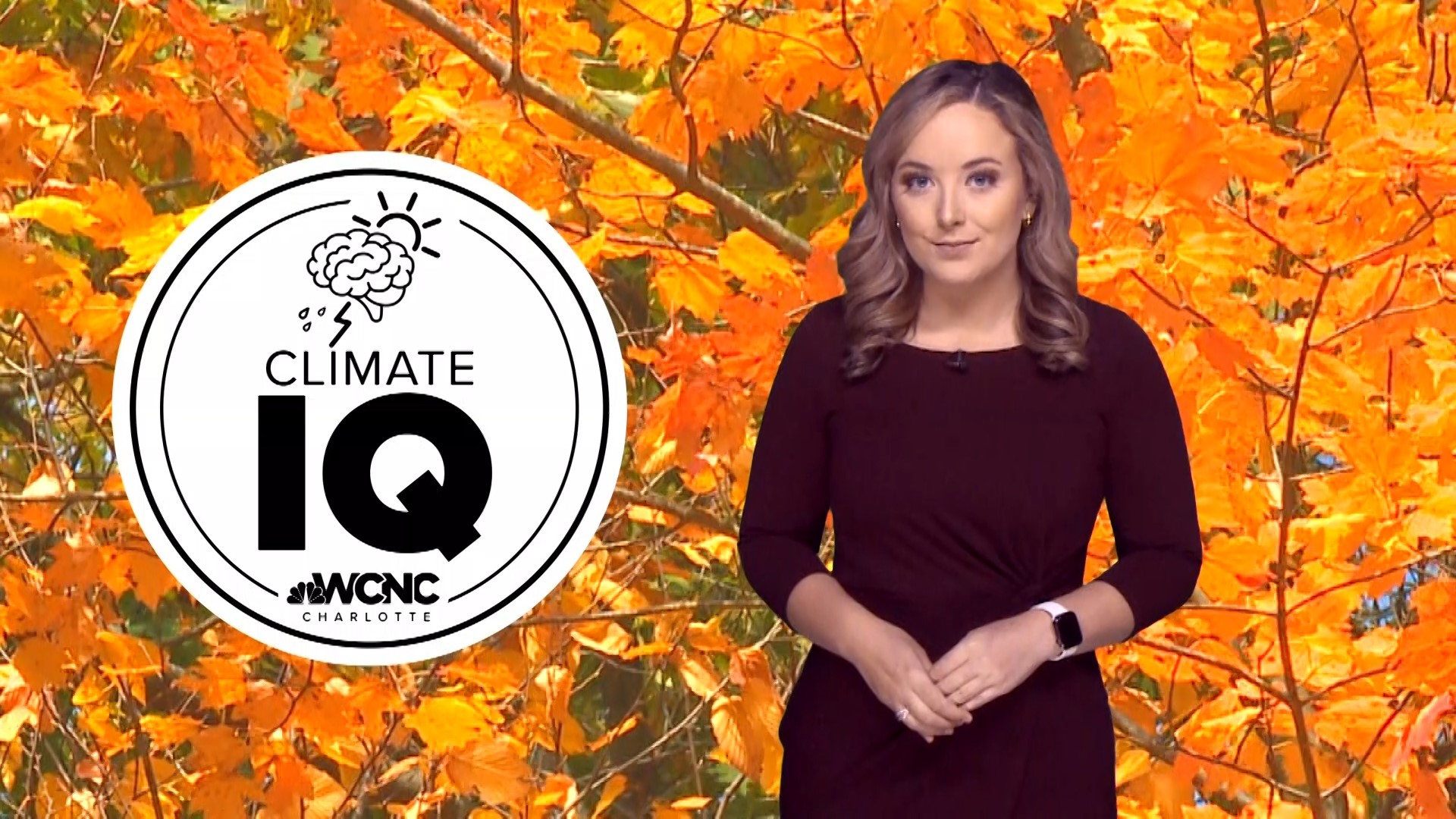CHARLOTTE, N.C. — As peak leaf-peeping season spreads across the U.S. each fall, it brings billions of dollars in tourism to some states, including North Carolina where some experts estimate just under one billion in revenue is generated.
In the years ahead, climate change could bring real impacts to the leaf-peeping industry. The cycles of fall plants are complex, but our understanding of their response to climate change is growing.
The timing and brilliance of fall colors are influenced by factors such as temperature, sun exposure, and rainfall. According to Climate Central, any shifts disrupt the ecological and economic value linked to fall foliage.
Here in North Carolina, the fall color season in the western mountains is the busiest tourist season for this area. Many mom-and-pop businesses may make their annual profit during this season.
Warming brought on by climate change can dull reds, oranges, and yellows and delay the peak foliage period.
Dr. Howard Neufeld, a professor of biology at App State University, said in his research and experience the strongest correlations are with the weather at the end of the summer.
"It's a little more complicated because trees are responding to two things in the fall. They're responding to the shortening of the days. So that's starting June 21. And they're responding to the temperature," Neufeld explained.
All trees react differently. Neufeld says trees like flowering dogwoods seem to respond to day length while a maple tree may respond quicker to the temperature change.
When we stay warmer later in the year, the leaves turn at different times. He calls it desynchronization. Instead of all the trees exploding in color the same week, some trees peak due to day length, while other trees are waiting for cooler temperatures.
Warmer summers can also delay the color change, leading to a shorter foliage season. Some years, intense heat, and heat waves prompt leaves to fall before autumn even arrives.
Early cold snaps are just as bad. A tree may start to turn color and then we warm back up.
"If the tree isn't prepared, [and] it gets a sudden freeze when it's not expecting it, it could drop its leaves," he said. "All these kinds of climate change can have pretty drastic effects on the fall color experience."
Lack of rainfall is a huge problem too. If trees become drought-stressed during the summer, they’ll just drop their leaves.
Neufeld also said new data shows we’re getting more intense rainfall events with longer dry periods in between, so the annual rainfall totals don’t change. The question becomes: how do trees and plants react to heavy rain and long droughts with nothing in between?
Neufeld's response: "We don't know the answer to that."
As extreme weather events, such as hurricanes, become more common and more intense, the strong winds and blinding rain can strip trees of their leaves completely ahead of autumn.
Climate change also poses longer-term threats that could disrupt leaf-peeping. The spread of diseases, invasive pests and the northward creep of tree species are all factors tied to warming temperatures.
Contact Brittany Van Voorhees at bvanvoorhe@wcnc.com and follow her on Facebook, Twitter and Instagram.

